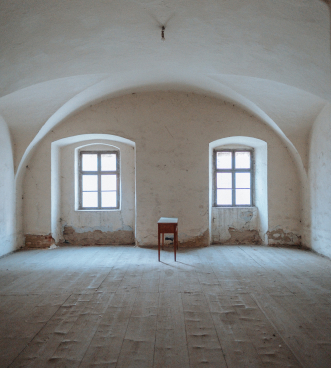In order to even consider establishing a Creative Center on the premises of the penitentiary, a feasibility study had to be carried out in previous years. On the basis of this study, we are investigating the possibilities of developing the center on the selected site.
The feasibility study consists of three parts. The analytical part involved mapping creative industries and creative centers abroad. The results of the mapping showed that the creative industries in Brno have a strong base of companies, individuals, educational and other institutions in the sector and offer extensive opportunities for the development of the city and the region.
The impact of the creative industries in Brno is comparable to other similarly sized European cities where the mapping was also carried out.

Measures for the development of creative industries
The conclusions of the first part of the feasibility study include recommendations for measures for the development of creative industries. The measures concern the involvement of creative industries in global networks, improving skills, strengthening cooperation, improving access to finance, institutional support for the development of creators and cooperation with educational institutions.
The first part also included a site survey in the vicinity of the penitentiary. The survey focused on the environment of Cejl Street and the wider area of the so-called Brno Bronx. The locality harbors a number of specificities, which are, however, counteracted by negative phenomena related to the social situation in the neighborhood. The implementation of the Creative Center project could, however, contribute to correcting the current situation. However, all activities must respect the genius loci of Cejl. This concerns in particular gentrification, or the influx of wealthy residents who are buying up and renovating neglected buildings in the area.
List of measures:
- Implementation of projects (e. g. creative incubator or creative credits)
- Support for local procurement
- Export promotion, foreign networking, cooperation with partner and other cities
- Spatial security
- Financial security and access to finance
- Advocacy for the creative industries and initiating support from government institutions and agencies
- Collaboration of established and non-established scenes, initiating professional associations in each sector
CONSTRUCTIONAL AND TECHNICAL RESEARCH
The next step was a constructional and technical survey which assessed the condition of the penitentiary and produced a pre-design document. The structural engineering survey confirmed that the cableway building was in a state of preservation and without serious structural defects. A combination of reconstruction of a substantial part of the historic buildings, partial rehabilitation and new extensions would therefore seem to be the appropriate approach. On the basis of the design of the spatial study, the maximum variant of the use of the existing building was selected, which envisages the use of the entire area of the cableway complex for the needs of the Creative Center and part of the Place of Memory.
WHAT DO THE CREATORS SAY?
The last design section defines the economic circumstances and needs of the project. It also addresses the question of organizational models, staffing, space, and its possible use for different types of activities and other projects. The quantitative analysis, in turn, showed the interest of creators in using the newly built space. In doing so, they cited the main benefit as being the opportunity to share the space with other people from the same field and across creative disciplines at the same time. At the same time, people working in the creative sector have no problem functioning in the Bronx area, as they are more open to minorities and their activity can play an important integrative role in the process of gentrification of the whole borough.